Jul 24, 2018 | Education, Sustainable Development, Women in Science
By Stephanie Bengtsson, researcher in the IIASA World Population Program
In the months after finishing my doctorate, I would often find myself having some variation of the following conversation upon meeting someone new, particularly in a social context:
New person: “So, what do you do?”
Me: “Actually, I’ve just finished my doctorate.”
New person [impressed]: “Wow! In what field?”
Me: “Education.”
New person [after a long pause]: “Oh.”
The tone of that “oh” has stayed with me in the years since: “You can get a doctorate in education?”, that little word seemed to say, following up with: “What does that involve? Stacking ABC blocks and looking through picture books? It can’t possibly be as challenging as a doctorate in a real subject, like economics or neuroscience.”
Many of my education colleagues around the world have had similar experiences, especially those who, like me, work primarily in the field of development. At the same time, the global news media is rife with articles about ‘failing’ school systems, a dwindling ‘supply’ of qualified teachers, ‘underperforming’ teachers, low Programme for International Student Assessment (PISA) results, and more, as the international community searches for quick-fix solutions with easily quantifiable measures of progress to address these problems, often outside the realm of education research. Generally, within the dominant development discourse, the aim of these solutions is clear: to increase attainment and improve student test scores, particularly in the so-called STEM subjects (i.e., Science, Technology, Engineering, and Mathematics), in order to build human capital and subsequently grow and sustain the labor market and economy. In other words, improvements to education are typically justified only to the extent that they will increase education’s instrumental value (leading to improvements in other sectors), rather than its intrinsic value.
As such, those of us working in international educational development often find ourselves caught in a paradox, as our sector has been (and continues to be) simultaneously under-appreciated in terms of the contribution it can make to other aspects of development and wellbeing (and subsequently under-prioritized), and over-emphasized in its role as a tool of development when it does make it onto the agenda. We therefore frequently find ourselves having to first ‘make the business case’ for education by proving its instrumental value before beginning any research or development project, in a way that would be considered ludicrous in, for instance, the sectors of health and nutrition. Once we have successfully argued that case, the pressure is on to measure inputs and narrowly-defined short-term outcomes, leaving little time to examine complex educational processes and longer-term impacts of education.
In late September 2015, Heads of State and High Representatives from around the world committed to a new sustainable development agenda consisting of 17 Sustainable Development Goals (SDGs) and 169 accompanying targets. The framing document for the SDGs, UN Resolution 70/1, Transforming our World: The 2030 Agenda for Sustainable Development, envisions an important role for education within this agenda, both as an end and a powerful means of development:
“All people, irrespective of sex, age, race, ethnicity, and persons with disabilities, migrants, indigenous peoples, children and youth, especially those in vulnerable situations, should have access to life-long learning opportunities that help them acquire the knowledge and skills needed to exploit opportunities and to participate fully in society. We will strive to provide children and youth with a nurturing environment for the full realization of their rights and capabilities, helping our countries to reap the demographic dividend including through safe schools and cohesive communities and families.” (UN 2015, article 25)
For those of us working in international educational development, the SDGs thus represent a significant step forward from the Millennium Development Goals (MDGs), as well as an opportunity to encourage the wider development community to engage with and invest in a shared vision for equitable, inclusive, quality lifelong learning opportunities.
In our new book, The Role of Education in Enabling the Sustainable Development Agenda, my colleagues and I conduct an extensive critical review of literature from a range of disciplines, attempting to find answers to these fundamental questions about the value of education and the dynamic nature of the relationship between education and development. We engage with the argument put forward in the capabilities approach to development that the capability to be educated is, in and of itself, an important freedom, and a fundamental aspect of human wellbeing. Given that processes of teaching and learning are a natural and defining characteristic of human society, we argue that education is most successful at contributing to sustainable development across all dimensions at once if, rather than being crafted as an instrument to achieve a specific and narrow development objective – no matter how worthy – education is improved on its own terms, and as an end in itself.
We also draw from recent work by the economist Kate Raworth, which attempts to connect the economic, social, and environmental dimensions of sustainable development, by combining social justice work with planetary boundaries research in order to define a space within which humanity can survive and thrive:
“Between a social foundation that protects against critical human deprivations, and an environmental ceiling that avoids critical natural thresholds, lies a safe and just space for humanity [. . .] where both human wellbeing and planetary wellbeing are assured, and their interdependence is respected.” (Raworth 2012, p. 7)
This book builds on work we carried out for the United Nations Educational, Scientific, and Cultural Organization (UNESCO) Global Education Monitoring (GEM) Report, and shares in UNESCO’s urgent sense of purpose to demonstrate not only “the potential for education to propel progress towards all global goals”, but also that “education needs a major transformation to fulfil that potential and meet the current challenges facing humanity and the planet” (UNESCO n.d., n.p.). At no point do we claim to be providing the definitive account of the role of education in the sustainable development agenda; rather, we hope that our book will inspire critical reflection, engagement, and, above all, learning, among a wide audience of scholars, students, policymakers, and practitioners alike.
References
Harber, C. (2014). Education and international development: Theory, practice and issues. Oxford: Symposium Books.
Raworth, K. (2012). A safe and just space for humanity: Can we live within the doughnut? Oxfam Discussion Paper. Oxford: Oxfam.
Sen, A. (1999). Development as Freedom. New York: Knopf.
UNESCO. (n.d). Education needs to change fundamentally to meet global development goals. Retrieved from: www.unesco.org/new/en/education/themes/leading-the-international-agenda/education-for-all/single-view/news/education_needs_to_change_fundamentally_to_meet_global_devel/
Note: This article gives the views of the authors, and not the position of the Nexus blog, nor of the International Institute for Applied Systems Analysis.
May 30, 2018 | Economics, Food & Water, Sustainable Development, Systems Analysis
By Alan Nicol, Strategic Program Leader at the International Water Management Institute (IWMI)
I was at the local corner store in Uganda last week and noticed the profusion of rice being sold, the origin of which was from either India or Pakistan. It is highly likely that this rice being consumed in Eastern Africa, was produced in the Indus Basin, using Indus waters, and was then processed and shipped to Africa. That is not exceptional in its own right and is, arguably, a sign of a healthy global trading system.
Nevertheless, the rice in question is likely from a system under increasing stress, one that is often simply viewed as a hydrological (i.e., basin) unit. What my trip to the corner store shows is that perhaps more than ever before a system such as the Indus is no longer confined–it extends well beyond its physical (hydrological) borders.
Not only does this rice represent embedded ‘virtual’ water (the water used to grow and refine the produce), but it also represents policy decisions, embedded labor value, and the gamut of economic agreements between distribution companies and import entities, as well as the political relationship between East Africa and South Asia. On top of that are the global prices for commodities and international market forces.
In that sense, the Indus River Basin is the epitome of a complex system in which simple, linear causality may not be a useful way for decision makers to determine what to do and how to invest in managing the system into the future. Integral to this biophysical system, are social, economic, and political systems in which elements of climate, population growth and movement, and political uncertainty make decisions hard to get right.
Like other systems, it is constantly changing and endlessly complex, representing a great deal of interconnectivity. This poses questions about stability, sustainability, and hard choices and trade-offs that need to be made, not least in terms of the social and economic cost-benefit of huge rice production and export.
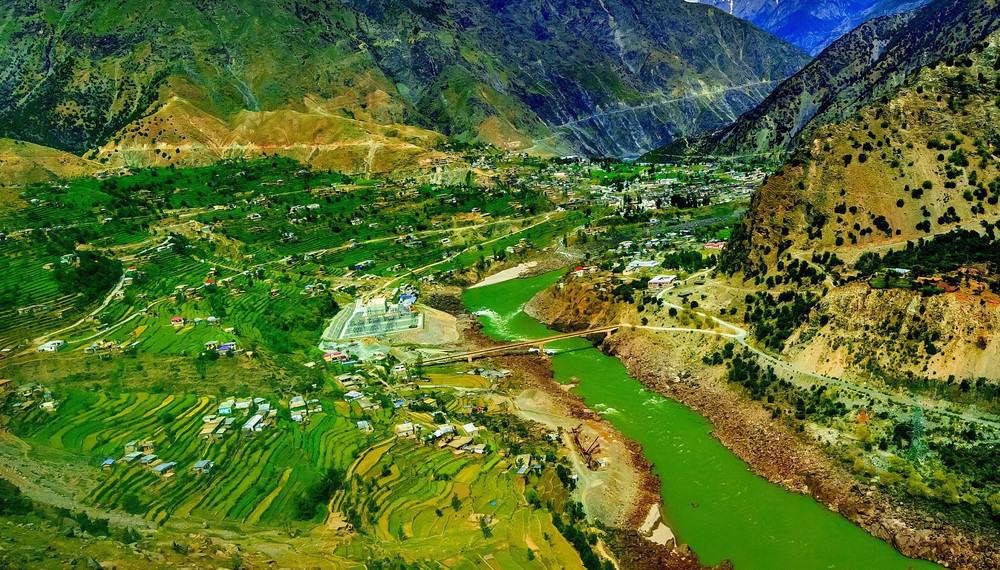
An aerial view of the Indus River valley in the Karakorum mountain range of the Basin. © khlongwangchao | Shutterstock
So how do we go about planning in a system that is in such constant flux?
Coping with system complexity in the Indus is the overarching theme of the third Indus Basin Knowledge Forum (IBKF) being co-hosted this week by the International Centre for Integrated Mountain Development (ICIMOD), the International Institute for Applied Systems Analysis (IIASA), the International Water Management Institute (IWMI), and the World Bank. Titled Managing Systems Under Stress: Science for Solutions in the Indus Basin, the Forum brings together researchers and other knowledge producers to interface with knowledge users like policymakers to work together to develop the future direction for the basin, while improving the science-decision-making relationship. Participants from four riparian countries–Afghanistan, China, India, and Pakistan–as well as from international organizations that conduct interdisciplinary research on factors that impact the basin, will work through a ‘marketplace’ for ideas, funding sources, and potential applications. The aim is to narrow down a set of practical and useful activities with defined outcomes that can be tracked and traced in coming years under the auspices of future fora.
The meeting builds on the work already done and, crucially, on relations already established in this complex geopolitical space, including under the Indus Forum and the Upper Indus Basin Network. By sharing knowledge, asking tough questions, and identifying opportunities for working together, the IBKF hopes to pin down concrete commitments from both funders and policymakers, but also from researchers, to ensure high quality outputs that are of real, practical relevance to this system under stress–from within and externally.
Scenario planning
Feeding into the IBKF3, and directly preceding the forum, the Integrated Solutions for Water, Energy, and Land Project (ISWEL) will bring together policymakers and other stakeholders from the basin to explore a policy tool that looks at how best to model basin futures. This approach will help the group conceive possible futures and model the pathways leading to the best possible outcomes for the most people. This ‘policy exercise approach’ will involve six steps to identify and evaluate possible future pathways:
- Specifying a ‘business as usual’ pathway
- Setting desirable goals (for sustainability pathways)
- Identifying challenges and trade-offs
- Understanding power relations, underlying interests, and their role in nexus policy development
- Developing and selecting nexus solutions
- Identifying synergies, and
- Building pathways with key milestones for future investments and implementation of solutions.
The summary of this scenario development workshop and a vision for the Indus Basin will be shared as part of the IBKF3 at the end of the event, and will help the participants collectively consider what actions can be taken to ensure a prosperous, sustainable, and equitable future for those living in the basin.
The rice that helps feed parts of East Africa plays a key global role–the challenge will be ensuring that this important trading relationship is not jeopardized by a system that moves from pressure points to eventual collapse. Open science-policy and decision-making collaboration are key to making sure that this does not happen.
This blog was originally published on https://wle.cgiar.org/thrive/2018/05/29/rice-and-reason-planning-system-complexity-indus-basin.
Note: This article gives the views of the author, and not the position of the Nexus blog, nor of the International Institute for Applied Systems Analysis.
Sep 19, 2017 | Citizen Science, Food, Sustainable Development
By Myroslava Lesiv, IIASA Ecosystems Services and Management Program.
The public can contribute considerably to science by filling the gaps of missing information in many research areas, for example, monitoring land use, biodiversity, or forest degradation. Crowdsourcing campaigns organized by research institutions bring together citizens interested in science and help solving research questions to the benefit of the whole world.
This June, the IIASA Geo-Wiki team ran the Global Field Size campaign, encouraging citizen scientists to classify field sizes on satellite images. Its aim was to develop a global field sizes dataset, which will be used as input to create an improved global cropland field size map for agricultural monitoring and food security assessments. The field sizes dataset can also help us determine what types of satellite data are needed for agricultural monitoring in different parts of the world.
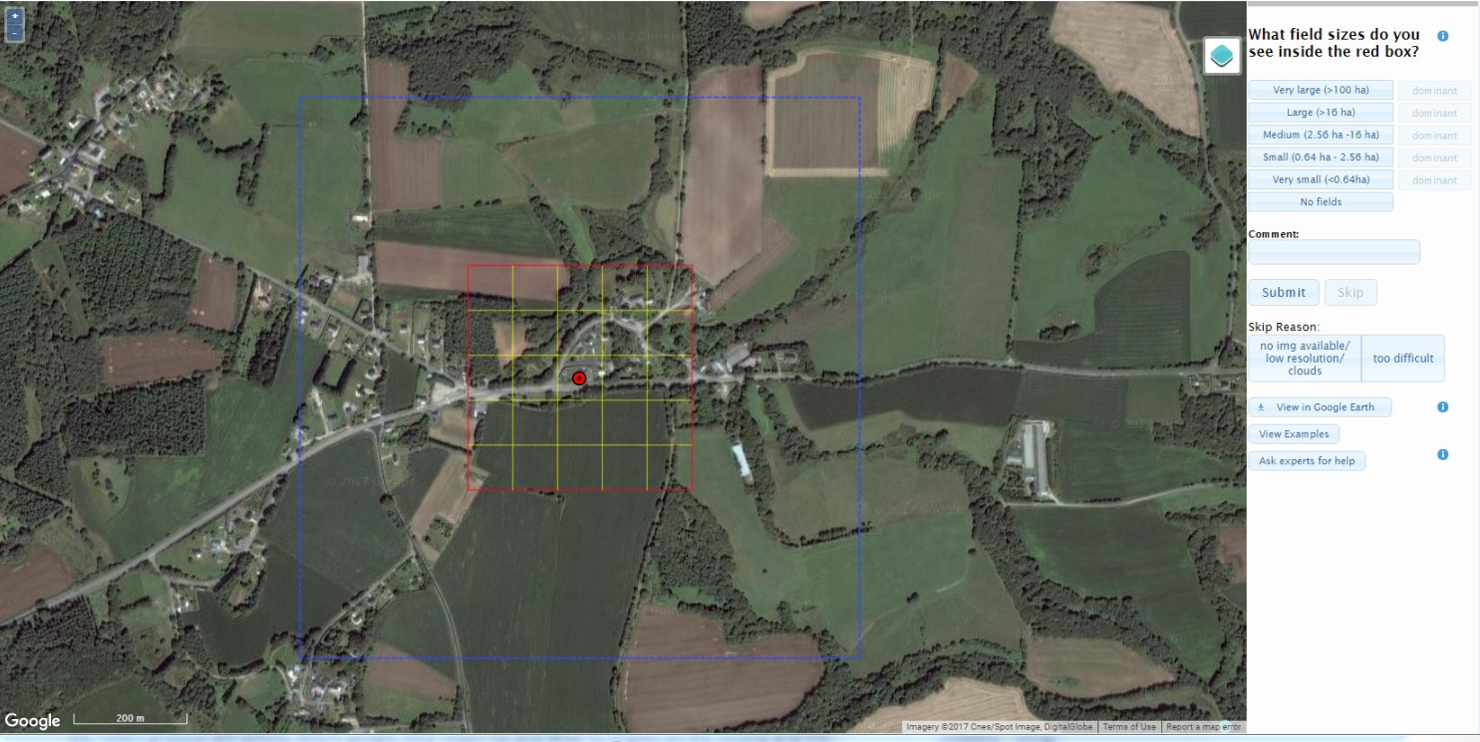
Geo-Wiki interface for collecting field size data. Background layer: Google Maps.
Why are field sizes so important? They provide us with valuable information to tackle challenges of food security. A recent study showed that more than a half the food calories produced globally comes from smallholder farmers, who often make up the most vulnerable parts of population, living in poverty. Within this scope, the field size dataset fills the gaps of missing information, especially for countries that have a limited food supply and lack a well-developed agricultural monitoring system.
The Global Field Size campaign has been one of the most successful crowdsourcing campaigns run through the Geo-Wiki engagement platform. Within one month, 130 participants completed 390,000 tasks – that is, they classified the field sizes in 130,000 locations around the globe!
So we can see that crowdsourcing is powerful, but can we trust the data? Is it accurate enough to be used in different applications? I think it is! The Geo-Wiki team has significant experience in running crowdsourcing campaigns; one of the key lessons we have learned from previous Geo-Wiki campaigns is the importance of training the public to increase the quality of the crowdsourced data.
This campaign was designed so that the participants learned over time how to delineate fields in different regions of the world, and, at the same time, pay special attention to the quality of their submissions. At the end of the campaign, the majority of participants gave us a feedback that, to them, this campaign was indeed a learning exercise. From our end, I have to add, this was also a challenging campaign, as fields are so diverse in shape, continuity of coverage, crop type, irrigation, etc.

Global distribution of dominant field sizes. Cartography by Myroslava Lesiv. Country boundaries: GAUL. Software: ArcMap 10.1.
During the campaign, the crowd was asked to identify whether there were fields in a certain location, and determine the relevant field sizes by the visual interpretation of very high-resolution Google and Bing imagery. A “field” was defined as an agricultural area that included annual or perennial croplands, fallow, shifting cultivation, pastures or hayfields. The collected data can also be used to identify areas falsely mapped as cropland.
Now the team is focused on summarizing the results of the campaign, processing the collected field size data, and preparing them for scientific publication. We will ensure that the published dataset is of high quality and can be used by others with confidence!
This article gives the views of the author, and not the position of the Nexus blog, nor of the International Institute for Applied Systems Analysis.
Sep 1, 2017 | Sustainable Development
By Verena Rauchenwald, IIASA Air Quality and Greenhouse Gases Program.
“This is just the beginning…” were the visionary words of Henrik Skovby, one of the founders of the global innovation lab UNLEASH, at the UNLEASH Award show in Aarhus, Denmark, on 21 August 2017. Honorary guests, such as the Prime Minister of Denmark, Lars Løkke Rasmussen, the Danish Crown Princess Mary, and Ashton Kutcher, US actor and investor, came to Aarhus to deliver awards to UNLEASH’s top teams with the best ideas on how to achieve the UN Sustainable Development Goals (SDGs) by 2030.
The UNLEASH innovation lab invited 1000 international ‘talents’, aged 18-35, to Denmark for 10 days, to undergo a unique innovation creation procedure facilitated by Deloitte, one of UNLEASH’s partners. As one of the selected talents, I had the privilege of spending a few days at one of Denmark’s Højskole (a Danish community college) where the concept of lifelong learning really comes to life. These community colleges’ principles go back to the Danish philosopher Grundtvig, who believed that education should be available to everyone. Nowadays, many young adults choose to live and learn at Højskole for four to five months at a time, to learn about themselves and various themes. Tests do not exist, instead participants are encouraged to go to their classes and are given a certificate in the end.
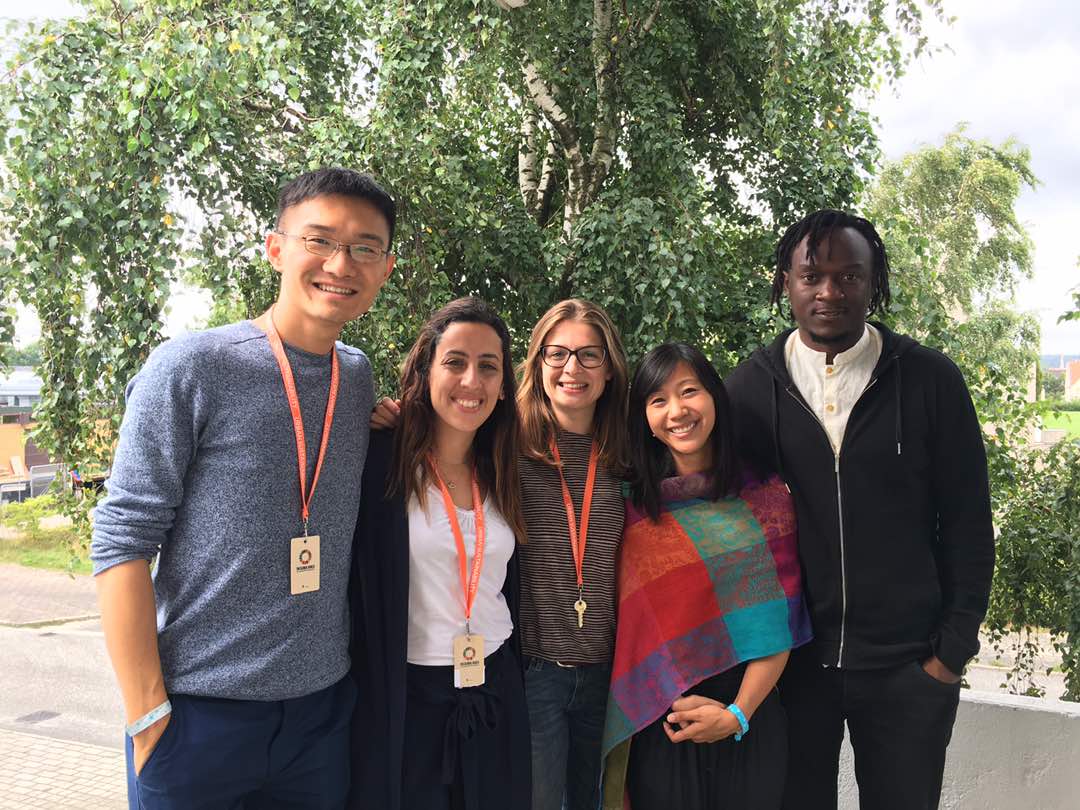
Our team in Copenhagen. Left to right: Jerry Zhu, Nazly Abdel Azim, Verena Rauchenwald, Tiffany Yu, Raymond Besiga © Jerry Zhu
For the innovation process, I was grouped together with brilliant minds from Shanghai, Cairo, Kampala and San Francisco. Our team worked on the SDG 11: “Make cities and human settlements inclusive, safe, resilient and sustainable.” Among other sub goals, the SDG 11a further aims to “support positive economic, social and environmental links between urban, peri-urban and rural areas by strengthening national and regional development planning.” After many hours of brainstorming and discussions, our group agreed on the following problem statement: Small-scale farmers in Eastern Africa have difficulties selling their produce to urban businesses.
From there on, we interviewed Eastern African farmers, intermediaries and urban businesses via phone to understand their needs. We found that efforts to cut out intermediaries are often not beneficial as they hold many connections on both sides and take care of the logistics. Furthermore, farmers often do not know what to produce and therefore plant a variety of crops of smaller quantities. As a solution, we came up with a digital platform that supports the overall information flow between the actors. It communicates via text message between farmers and intermediaries and through online forms between intermediaries and urban businesses. This way, all actors win through increased business based on a better match between supply and demand, and less produce is wasted.
The many hours of work and pitching of our ideas to UNLEASH’s facilitators, experts and investors were accompanied by daily sessions of singing in the morning (a Højskole tradition), immense cooperative efforts to help each other, and a shared drive to make the world a better place for all. As a result, a strong, collaborative, global community was born.
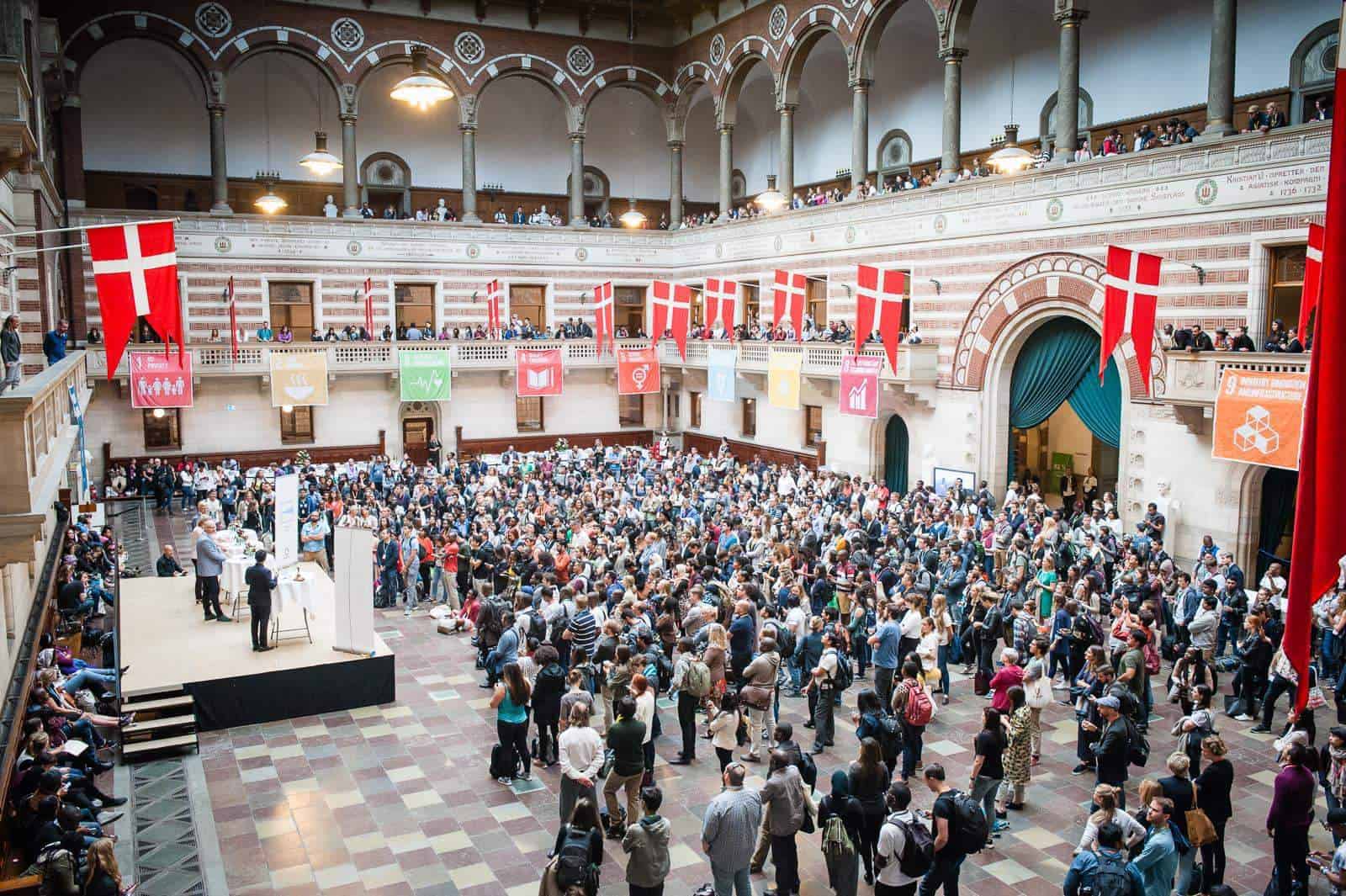
Our welcome to Copenhagen © Jerry Zhu
Following Henrik Skovby’s vision, the UNLEASH organization announced that they would continue to support the UNLEASH community and their ideas for at least one more year, both financially and through advisory services. From now on the UNLEASH innovation lab will take place once a year until the year 2030, when the 17 SDGs need to be fulfilled. My hope is that more initiatives such as UNLEASH will arise, and young people will become empowered to act upon their beliefs and consequently guide our world into a sustainable future.
This article gives the views of the author, and not the position of the Nexus blog, nor of the International Institute for Applied Systems Analysis.
Aug 25, 2017 | IIASA Network, Sustainable Development
Johanna Mair is a professor of Organization, Strategy and Leadership at the Hertie School of Governance, Academic Editor of Stanford Social Innovation Review, Co-Director of the Global Innovation for Impact Lab at the Stanford Center on Philanthropy and Civil Society, and Academic Co-Director Social Innovation and Change Initiative at the Harvard Kennedy School. Mair is also a member of the Alpbach-Laxenburg Group, which holds its annual retreat this weekend on the sidelines of the European Forum Alpbach.

Johanna Mair ©Hertie School of Governance
At the Alpbach-Laxenburg Group retreat this weekend, you will be joining a discussion on governance and institutional transformation towards sustainability. What do you see as the biggest barriers to sustainable development?
Sustainability challenges typically require a concerted effort to achieve impact. We still lack the appropriate governance and accountability mechanisms that ensure implementation of well-intended strategies and commonly devised goals.
As an expert in social entrepreneurship and innovation, what new developments have you seen that you think could drive a transformation towards sustainability? Could you give examples of successful innovations that have taken hold?
We do see innovation on many fronts. Especially in governance technology has enabled a number of useful and helpful innovations that allow for more transparent and accountable processes. At the same time we still face enormous challenges that cannot be fixed by technology and require us to face deeply rooted relational and cultural problems. The prevalence of open defecation and lack of sanitary infrastructure in India is just one example.
Sometimes it seems like there are many great ideas, but adoption is slow. What do you think is necessary to make the leap from innovative idea to widespread practice?
“Most new ideas are bad ideas” as Jim March from Stanford University would say. We must stop praising innovation and start to think and act on linking innovation and scaling as two distinct process to create impact. Innovation is an investment and creates the potential for impact. Scaling enacts and grows this potential and transforms innovation into tangible outcomes – improving the lives of marginalized people and communities and making progress on stubborn societal and environmental problems.
We have elaborated on this in our new book on “Innovation and Scaling for Impact – How Successful Social Enterprises Do It,” which I co-wrote with Christian Seelos.
How do innovation and governance go together? What are the challenges and opportunities for bringing new ideas into institutions and governments?
Governance needs to exert an enabling role. We need to craft and design governance systems that foster innovation. At the same time, governance systems need also make sure that the potential and usefulness of innovation can be tested along the way. This requires reflecting on markers of success that are process and not outcome focused.
The Alpbach-Laxenburg Group brings together leaders from business, and young entrepreneurs, along with government leaders and science experts. What do you think can be gained from a meeting of this type?
The most important outcome will be a shared understanding of priorities, pathways, and markers of success for this journey.
This article gives the views of the author, and not the position of the Nexus blog, nor of the International Institute for Applied Systems Analysis.
More information
IIASA at the European Forum Alpbach 2017 and Alpbach-Laxenburg Group Retreat: 27-29 August 2017
Johanna Mair appearances at Alpbach: 19 August – 1 September
Jul 26, 2017 | Alumni, Climate Change, Poverty & Equity, Sustainable Development, Water, Young Scientists
Adil Najam is the inaugural dean of the Pardee School of Global Studies at Boston University and former vice chancellor of Lahore University of Management Sciences, Pakistan. He talks to Science Communication Fellow Parul Tewari about his time as a participant of the IIASA Young Scientists Summer Program (YSSP) and the global challenge of adaptation to climate change.
How has your experience as a YSSP fellow at IIASA impacted your career?
The most important thing my YSSP experience gave me was a real and deep appreciation for interdisciplinarity. The realization that the great challenges of our time lie at the intersection of multiple disciplines. And without a real respect for multiple disciplines we will simply not be able to act effectively on them.

Prof. Adil Najam speaking at the Deutsche Welle Building in Bonn, Germany in 2010 © Erich Habich I en.wikipedia
Recently at the 40th anniversary of the YSSP program you spoke about ‘The age of adaptation’. Globally there is still a lot more focus on mitigation. Why is this?
Living in the “Age of Adaption” does not mean that mitigation is no longer important. It is as, and more, important than ever. But now, we also have to contend with adaptation. Adaptation, after all, is the failure of mitigation. We got to the age of adaptation because we failed to mitigate enough or in time. The less we mitigate now and in the future, the more we will have to adapt, possibly at levels where adaptation may no longer even be possible. Adaption is nearly always more difficult than mitigation; and will ultimately be far more expensive. And at some level it could become impossible.
How do you think can adaptation be brought into the mainstream in environmental/climate change discourse?
Climate discussions are primarily held in the language of carbon. However, adaptation requires us to think outside “carbon management.” The “currency” of adaptation is multivaried: its disease, its poverty, its food, its ecosystems, and maybe most importantly, its water. In fact, I have argued that water is to adaptation, what carbon is to mitigation.
To honestly think about adaptation we will have to confront the fact that adaptation is fundamentally about development. This is unfamiliar—and sometimes uncomfortable—territory for many climate analysts. I do not believe that there is any way that we can honestly deal with the issue of climate adaptation without putting development, especially including issues of climate justice, squarely at the center of the climate debate.
COP 22 (Conference of Parties) was termed as the “COP of Action” where “financing” was one of the critical aspects of both mitigation and adaptation. However, there has not been much progress. Why is this?
Unfortunately, the climate negotiation exercise has become routine. While there are occasional moments of excitement, such as at Paris, the general negotiation process has become entirely predictable, even boring. We come together every year to repeat the same arguments to the same people and then arrive at the same conclusions. We make the same promises each year, knowing that we have little or no intention of keeping them. Maybe I am being too cynical. But I am convinced that if there is to be any ‘action,’ it will come from outside the COPs. From citizen action. From business innovation. From municipalities. And most importantly from future generations who are now condemned to live with the consequences of our decision not to act in time.
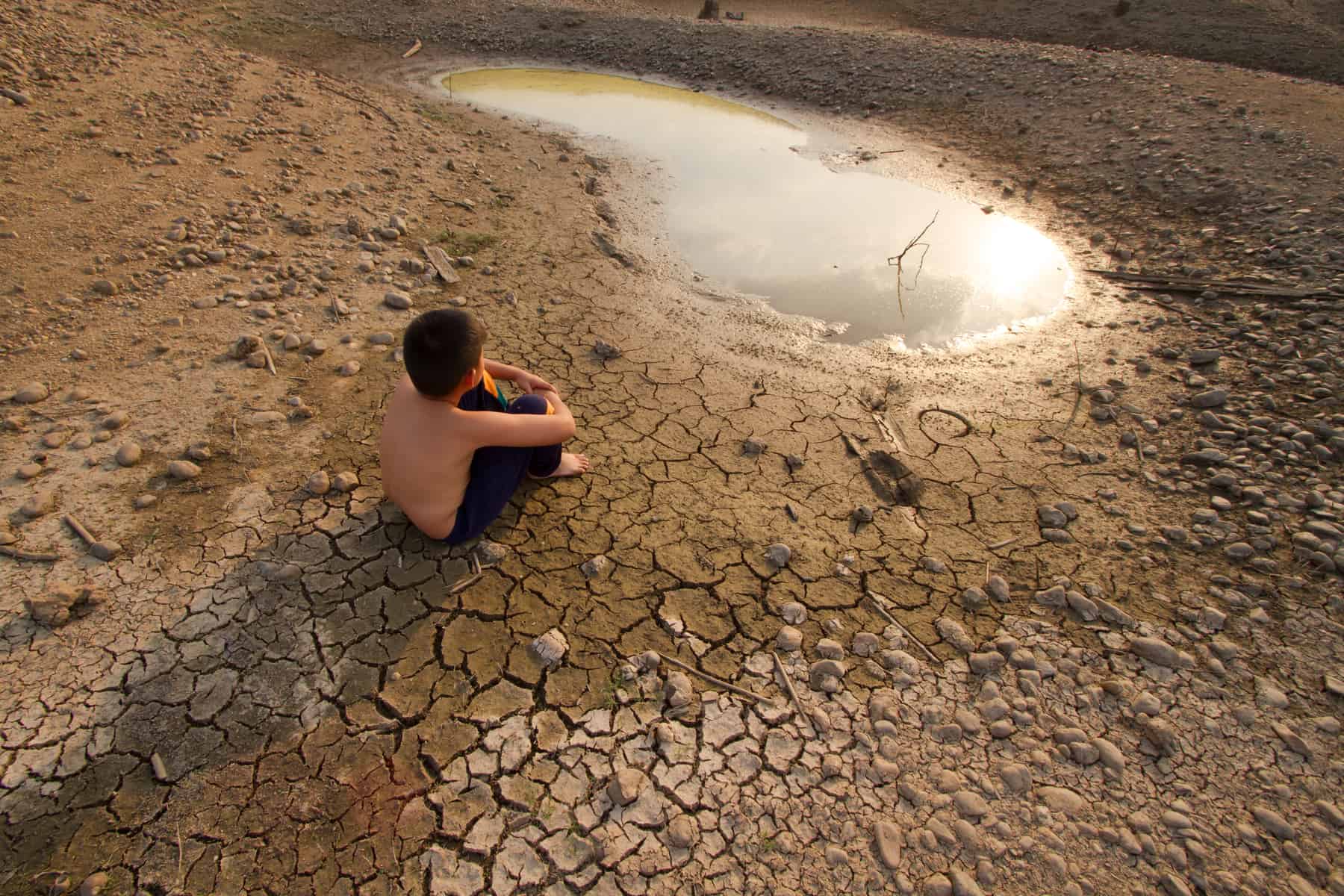
© Piyaset I Shutterstock
What is your greatest fear for our planet, in the near future, if we remain as indecisive in the climate negotiations as we are today?
My biggest fear is that we will—or maybe already have—become parochial in our approach to this global challenge. That by choosing not to act in time or at the scale needed, we have condemned some of the poorest communities in the world—the already marginalized and vulnerable—to pay for the sins of our climatic excess. The fear used to be that those who have contributed the least to the problem will end up facing the worst climatic impacts. That, unfortunately, is now the reality.
What message would you like to give to the current generation of YSSPers?
Be bold in the questions you ask and the answers you seek. Never allow yourself—or anyone else—to rein in your intellectual ambition. Now is the time to think big. Because the challenges we face are gigantic.
Note: This article gives the views of the interviewee, and not the position of the Nexus blog, nor of the International Institute for Applied Systems Analysis.









You must be logged in to post a comment.